Payment tokenization is a foundational practice in online transactions, with a core purpose: enhancing the protection of sensitive information. Picture your credit card data as a treasure vault needing safeguarding; tokenization is the guardian that replaces this treasure with uniquely coded tokens. These tokens are designed to be inscrutable, akin to puzzle pieces without the key. Only a secure detokenization system possesses the key to decipher them.
Tokenization, besides being a formidable defense against fraud, simplifies and fortifies transaction processes. It’s like the magic wand of online payments, ensuring your financial data stays secure.
Transforming Data into Indecipherable Codes
In the world of digital payments, where security reigns supreme, payment tokenization plays a pivotal role in safeguarding sensitive data against unauthorized access and breaches. Think about it: when you make an online purchase, your card details get tokenized. This means your 16-digit card number, expiry date, and even your name become indecipherable codes. The result? Even if a malicious entity intercepts this information, all they get are meaningless strings of characters.
Now, let’s explore tokenization’s benefits further. Firstly, it safeguards payment details’ integrity and confidentiality, ensuring only authorized parties handle your financial information. Secondly, it streamlines and simplifies payment procedures. Ever wondered how one-click purchases on your favorite e-commerce platform work? Tokenization is the secret sauce, enabling seamless retrieval of payment information without re-entry.
NORBr’s take: Universal Tokenization
Intrigued to explore how NORBr, as a payment solution orchestrator, differs from traditional PSP tokenization? Our article on Universal Tokenization by NORBr takes you through tokenization intricacies via an orchestrator. Discover why we call it ‘universal tokenization’ and how it enhances digital transaction security and efficiency.
In summary: the guardian of online payments
So, in summary, payment tokenization is the safeguarding hero in online payments, turning sensitive data into a code only the right key can unlock. It’s a fundamental practice ensuring financial information remains confidential and transactions effortless and secure.
In the digital payment landscape, ensuring a seamless payment process is paramount. What precisely does the payment fallback definition entail, and what significance does it hold?
Understanding payment fallback definition
Fallback serves as a backup mechanism when a payment transaction faces challenges during its initial approval or processing attempt. In such situations, the system automatically reroutes the transaction to an alternative payment processor or gateway for a second chance at approval. This process aims to boost the likelihood of a successful transaction and provide a user-friendly experience.
Why a plan B is essential
Imagine a scenario where a customer attempts an online purchase, but their payment card is declined due to various reasons, such as insufficient funds, technical glitches, or network problems. Without alternative, this transaction could fail, resulting in a potentially lost sale and a frustrated customer.
However, payment fallback steps in to ensure the transaction’s success. It may opt for a different payment method, route the transaction through another acquiring bank, or make necessary adjustments to currency conversions—all to maximize the chances of approval.
Key benefits of payment fallback
- Improved transaction success: Fallback significantly increases the chances of a successful payment, reducing declined transactions.
- Enhanced user experience: Users appreciate a seamless payment process. Backup solution ensures customers can complete their transactions without interruptions.
- Reduced cart abandonment: Fallback minimizes the risk of customers abandoning their purchases due to payment issues, positively impacting a business’s revenue.
- Risk mitigation: By diversifying payment processing options, fallback helps businesses mitigate risks associated with relying on a single payment provider.
- Global reach: Fallback can accommodate regional preferences and currency options, enabling businesses to effectively serve a global customer base.
Exploring fallback with NORBr
For a deeper dive into the world of payment fallback and to understand how NORBr’s Recover AI enhances this critical aspect of payment processing, explore our dedicated article on the topic.
In the intricate world of payments, the term “routing” holds immense significance. It refers to the intricate process of guiding a payment transaction through a labyrinth of payment networks and gateways until it reaches its ultimate destination, which is typically an acquirer or a payment processor. This journey is orchestrated through a complex interplay of rules and algorithms that take into account a multitude of factors, including approval rates, transaction fees, currency considerations, geographical locations, and various other variables. The primary objective of payment routing is to optimize the performance of transactions, with a threefold aim: increasing approval rates, minimizing costs, and ensuring unwavering compliance with stringent regulations. All of this is achieved while seamlessly delivering a frictionless and pleasant user experience.
Understanding the core concepts
- Payment Transaction Journey: The payment routing process commences when a customer initiates a transaction. From there, it embarks on a voyage that includes several crucial waypoints. These waypoints include payment networks, gateways, and various intermediaries, each with its own role in facilitating the transaction’s progression.
- Rules and Algorithms: At the heart of routing are intricate sets of rules and algorithms. These sophisticated decision-making tools evaluate an array of parameters, such as transaction specifics, historical data, and real-time conditions. Based on this analysis, they determine the optimal path for the transaction.
The factors influencing payment routing
- Approval Rates: Payment routing strategies are designed to maximize the chances of a successful transaction. Factors such as historical data on approval rates for specific payment methods and networks play a pivotal role in this decision-making process.
- Transaction Fees: Cost efficiency is another key consideration. Routing decisions aim to minimize transaction costs, which can vary significantly depending on the chosen path.
- Currency Dynamics: In a globalized marketplace, currencies can vary from one transaction to another. Routing takes currency considerations into account to ensure seamless cross-border transactions.
- Geographical Considerations: Different regions may have unique payment networks and regulations. Routing decisions adapt to these geographical nuances to ensure compliance and efficiency.
Optimizing the user experience
A fundamental aspect of payment routing is ensuring a seamless and user-friendly experience. Customers expect transactions to be swift and hassle-free, and effective routing contributes to achieving this goal.
Exploring our payment Routine Engine
If you’re eager to delve deeper into the intricate world of payment routing and understand the technology that powers it, we invite you to explore our dedicated article on the Routine Engine. This article delves into the inner workings of payment routing, offering insights into the algorithms, strategies, and technologies that drive this critical aspect of the payment ecosystem.
Mastering the art of payment routing
In summary, payment routing is the invisible force that ensures your online transactions are not only secure and cost-efficient but also fast and reliable. Understanding the complexities and nuances of payment routing can empower businesses to make informed decisions that benefit both their bottom line and customer satisfaction.
A digital payment, also known as an electronic payment, is a transaction that is processed entirely through digital or electronic means, without the need for physical cash or checks. Digital payments can be made online, through mobile devices, or other digital channels. Some examples of digital payments include: Credit or Debit Cards: Payments made using credit or debit cards through a payment gateway or Point-of-Sale (POS) terminal. Mobile Payments: Payments made using mobile devices such as smartphones or tablets through mobile payment apps like Apple Pay, Google Pay, or Samsung Pay. E-Wallets: Payments made using digital wallets like PayPal, Venmo, or Alipay, which allow users to store multiple payment methods and make payments through a single account.
Cryptocurrencies: Payments made using digital currencies like Bitcoin or Ethereum, which use blockchain technology to facilitate secure and decentralized transactions. Bank Transfers: Payments made through electronic funds transfer (EFT) systems like Automated Clearing House (ACH) or wire transfers. Digital payments are becoming increasingly popular due to their convenience, speed, and security. They also provide businesses with greater flexibility in accepting payments and allow them to expand their customer base beyond physical borders.
Local Payment Methods are payment options that are specific to a country or region, and are preferred by customers in that market. These payment methods are often used for cross-border transactions, and can include options such as iDEAL in the Netherlands, Boleto Bancário in Brazil, and Alipay in China. By offering these payment options, merchants can cater to the specific needs and preferences of their customers in different regions. Here are some examples of Local Payment Methods from each of the five continents: North America: In the United States and Canada, credit and debit cards are the most common payment methods. However, consumers also prefer to use PayPal, Apple Pay, and Google Wallet. Additionally, Interac is a popular payment method in Canada. South America: In Brazil, Boleto Bancário is a preferred payment method.
This is a cash-based payment option that allows customers to print out a voucher and pay at a local bank or convenience store. In Argentina, Rapipago and Pagofacil are also popular cash-based payment options. Europe: In the Netherlands, iDEAL is a popular payment method. This is an online banking system that allows customers to pay directly from their bank accounts. In Germany, Sofortüberweisung is a similar payment method. Additionally, in the UK, customers prefer to use PayPal and Direct Debit. Asia: In China, Alipay and WeChat Pay are the two most popular payment methods. These are mobile payment options that allow customers to pay using their smartphones. In Japan, Konbini payments are popular, which allows customers to pay in cash at convenience stores. Africa: In Nigeria, customers prefer to use bank transfers, as well as cash-based options like Quickteller and Paga. In Kenya, M-Pesa is a mobile payment option that is widely used. It allows customers to transfer money and pay bills using their mobile phones.
Overall, Local Payment Methods are essential for businesses operating in different regions around the world. By offering these payment options, you can attract more customers and increase your revenue. It’s important to understand the specific needs and preferences of your customers in each region, and to provide payment options that they are comfortable using. By doing so, you can build trust with your customers and establish a strong presence in the global market.
We take payment security and compliance very seriously and follow strict measures to protect our merchants and their customers. Our platform is PCI-DSS compliant, which means that it meets the highest standards for payment card security. We also use advanced fraud detection and prevention tools to monitor transactions for suspicious activity. In addition, we stay up to date with the latest regulations and industry standards to ensure that we are always in compliance with relevant laws and regulations.
When onboarding new payment methods or providers, we follow a thorough vetting process to ensure that they meet our security and compliance standards. We evaluate their technical capabilities, financial stability, and track record of successful transactions. Once a new payment method or provider is approved, we work closely with them to integrate their system into our platform and test it thoroughly before making it available to our merchants.
Our platform supports a wide range of payment channels, including credit and debit cards, bank transfers, e-wallets, and mobile payments. We also offer support for alternative payment methods such as cryptocurrency, which allows merchants to expand their reach and appeal to a broader customer base.
Our payment orchestration platform acts as a centralized hub that connects merchants to various payment methods and providers. When a customer initiates a payment, our platform routes the transaction to the appropriate payment provider and handles the entire payment flow from authorization to settlement. This helps merchants manage their payment operations more efficiently and provides customers with a seamless checkout experience.
Payment Orchestration mechanism
- Step 1: Payment method selection
When a customer makes an online purchase and reaches the payment step, they choose their preferred payment method from the available options. These methods can include credit cards, e-wallets, bank transfers, and more.
The customer’s payment information, such as the credit card number, is collected, and then the orchestrator transforms it into secure tokens through the process of “tokenization.” These tokens are unique references to the original payment information, allowing them to be shared among different Payment Service Providers (PSPs) on the platform if necessary, all while maintaining security.
- Step 3: Intelligent payment routing
Once the payment information is encrypted through tokenization, the orchestrator acts as a travel planner for payments, determining the best route for each payment. It takes into account several factors, such as currency, the customer’s geographical location, currency conversion rates, and other relevant information.
- Step 4: Transmission to payment service providers (PSPs)
The orchestrator sends the tokenized payments to the selected Payment Service Providers (PSPs). The PSP is the entity that actually processes the payment.
- Step 5: Authentication and authorization
The PSP receives the tokenized payments and initiates the authentication and authorization process. This involves verifying the validity of the payment, ensuring the customer has sufficient funds, and obtaining approval from the card-issuing bank.
- Step 6: Payment error handling
If a payment attempt fails with the first PSP, the orchestrator retains the authentication data and associated tokens. It immediately plans a new route and sends the payment to another PSP that may have a better chance of success.
- Step 7: Receipt of approval
Once a payment authorization is obtained, the acquirer (the bank or financial institution that processes payments on behalf of the merchant) sends an authorization code to the PSP and the merchant. This means the payment is approved, and the transaction can be finalized.
- Step 8: Transaction completion
The merchant receives confirmation that the payment has been approved and can then finalize the transaction. The customer also sees the confirmation of successful payment. The customer’s funds will then be transferred from their account to the merchant’s account by the issuer of the payment method.
In summary, orchestrated payment is a sophisticated process that ensures online payments are managed optimally to provide a seamless experience for customers, increase revenue for businesses, and minimize sales losses due to payment processing issues. It utilizes tokenization, intelligent routing, and error management to achieve these goals.
A PA is a company that enables merchants to accept payments through a single account. They aggregate transactions from multiple merchants into a single merchant account and facilitate payouts.
A PayFac is a company that simplifies the payment process for sub-merchants by providing a unified platform. They act as a middleman between the sub-merchant and the acquiring #bank and handle all the necessary compliance and underwriting processes.
NORBr helps you comply with anti-money laundering (AML) and know-your-customer (KYC) regulations by implementing robust policies and procedures tailored to your specific needs, conducting ongoing AML training for your staff, and collecting and verifying your customer identity information. Overall, NORBr is a comprehensive and secure solution for managing your cross-border payments, providing you with the tools and support you need to make international transactions more efficient and secure.
NORBr helps you comply with anti-money laundering (AML) and know-your-customer (KYC) regulations by implementing robust policies and procedures tailored to your specific needs, conducting ongoing AML training for your staff, and collecting and verifying your customer identity information. Overall, NORBr is a comprehensive and secure solution for managing your cross-border payments, providing you with the tools and support you need to make international transactions more efficient and secure.v
NORBr is a payment orchestrator that connects you to all cross-border payment services providers that can help you manage your cross-border payments efficiently and securely, while also ensuring compliance with relevant regulations. NORBr offers advanced features like fraud detection, currency conversion, and real-time tracking and reporting, which can help you optimize your payment processing for cost efficiency and speed.
Cross-border payments can be associated with several risks for you, including currency fluctuation risk, regulatory risk, and fraud risk. Currency fluctuation risk refers to the potential impact of exchange rate fluctuations on the value of your payments. Regulatory risk relates to the complexity of complying with different regulations in different countries. Fraud risk refers to the potential for fraudulent activity, which can be more difficult to detect and prevent in cross-border transactions.
Processing times for cross-border payments can vary depending on the payment method and the countries involved. Some payment methods, such as wire transfers, can take several days to process, while others, such as mobile payments, instant payments, can be processed instantly. Currency conversion can also impact processing times, as it can add an additional layer of processing and verification.
There are several payment methods used for cross-border payments, including wire transfers, credit and debit cards, e-wallets, and mobile payments. Each payment method has its own benefits and drawbacks, and you should consider the preferences of your customers when selecting payment methods.
Compliance requirements for cross-border payments can vary by country and payment method, but generally include anti-money laundering (AML) and know-your-customer (KYC) regulations, as well as compliance with international trade and economic sanctions. Some countries may also require specific licenses or permits for conducting cross-border payments. Adhering to these regulatory requirements is essential for managing risk and avoiding legal and financial penalties.
Cross-border payments can present several challenges for you, including currency conversion, regulatory compliance, and fraud prevention. Currency conversion can be complex and costly, and exchange rates can fluctuate rapidly, leading to uncertainty around payment amounts and processing times. Regulatory requirements can vary by country and can be complex to navigate, adding to the complexity of cross-border payments. Fraud prevention is also a concern, as cross-border transactions can be more vulnerable to fraudulent activity.
Accepting local payment methods can offer several benefits for your business, including increased customer satisfaction, higher conversion rates, and reduced payment processing costs. By offering payment methods that are familiar and convenient for your customers in their local region, you can build trust and credibility with them. This can lead to increased customer loyalty and repeat business. Additionally, offering local payment methods can reduce the costs associated with currency conversion and cross-border fees, ultimately improving your bottom line.




